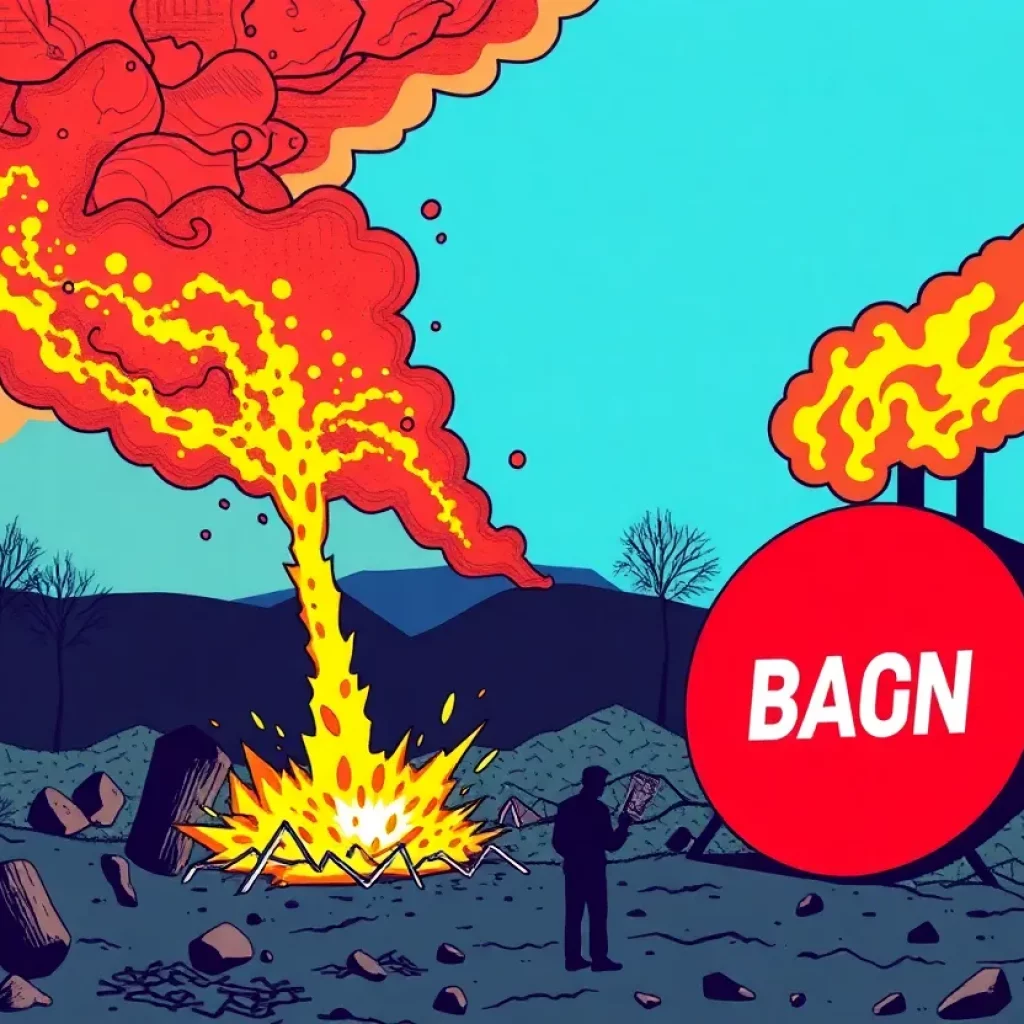News Summary
The Environmental Protection Agency’s reassessment of chrysotile asbestos ban has sparked concerns among health advocates and the medical community. Critics express fears that a proposed delay in the ban could endanger thousands of lives, especially given the alarming rate of asbestos-related diseases. Legal challenges from corporate entities complicate the issue, as the EPA navigates public health and industry interests. Meanwhile, legislative efforts continue to push for more stringent regulations to combat future health crises linked to asbestos exposure, highlighting a pressing need for decisive action.
The Future of the Asbestos Ban: Shrouded in Uncertainty
The battle over chrysotile asbestos in the United States is reigniting as the Environmental Protection Agency (EPA) reassesses its position on banning this notorious carcinogen. Under the Trump administration, a 30-month pause has been proposed to evaluate the implications of a previously decided ban, raising alarms among health advocates and the medical community alike.
Concerns over Public Health
The potential reversal of the asbestos ban has ignited criticism from various quarters, with advocates, cancer survivors, and healthcare professionals expressing grave concerns that delaying the ban could endanger thousands of lives. The statistics paint a dire picture, as someone in the nation succumbs to an asbestos-caused disease every 13 minutes. This grave reality serves as a stark reminder of the risks associated with asbestos exposure, especially diseases like mesothelioma and lung cancer.
Legal Battles and Corporate Interests
Complicating this public health issue are legal challenges from corporations like Olin Corporation and various chemistry councils. These entities claim that the EPA’s proposed 2024 ban is overly broad under the Toxic Substances Control Act (TSCA). In March 2024, the EPA announced its decision to prohibit ongoing uses of chrysotile asbestos, aiming to protect citizens from various cancers tied to asbestos exposure.
Chrysotile asbestos, commonly referred to as white asbestos, continues to be imported into the U.S., particularly for its use in the chlor-alkali industry. Eight facilities are reportedly still using asbestos diaphragms, which raises concerns that the ongoing operations could affect public health significantly. Under the proposed ban, companies would be granted a phase-out period of up to 12 years, ostensibly to allow a smooth transition away from these harmful substances.
A History of Failed Attempts
The path to a successful asbestos ban has been fraught with challenges. Previous efforts, such as the 1989 ban and other legislative initiatives, were stymied by court interventions that favored industry interests over public health. The current re-evaluation of the ban by the EPA has led critics to argue that the agency appears to be caving to the demands of polluters rather than safeguarding the well-being of the public.
Public Health Policy in Disarray
The resurgence of debate over the asbestos ban has resulted in what some describe as chaos and confusion in public health policy. The Alan Reinstein Ban Asbestos Now (ARBAN) Act is gaining momentum, aiming to eliminate all forms of asbestos and close existing regulatory loopholes. This act parallels the EPA’s initiatives under the Toxic Substances Control Act, which empowers the agency to restrict toxic substances, with the recent proposed ban being hailed as a crucial step towards combating cancer.
The Global Context
In the global arena, the United States lags far behind, as around 70 other countries have already implemented full bans on asbestos despite the well-documented health risks. Experts in the field, including those like Dr. Arthur L. Frank, stress the urgency of comprehensive regulations to avert future health crises linked to asbestos exposure.
Potential Risks and Legislative Responses
The EPA’s impending assessment will investigate whether alternative measures could effectively resolve asbestos risks without resorting to a complete ban. Should reconsideration lead to a reversal of the ban, the implications could be dire, potentially increasing exposure rates and heightening the incidence of asbestos-related diseases. Consequently, urgent calls for protective legislation are echoing across advocacy channels, emphasizing the need for decisive action to protect public health.
As the dust settles on this contentious issue, the fate of the asbestos ban hangs in the balance. With lives at stake and the specter of cancer looming, the forthcoming decisions will undoubtedly shape the landscape of public health and environmental policy in the United States.
Deeper Dive: News & Info About This Topic
HERE Resources
Understanding Mesothelioma Claims: The Role of Lawyers
Massachusetts Jury Awards $8 Million in Landmark Talcum Powder Case
Trump Administration’s Troubling Reconsideration of Asbestos Ban
Lawyer Battles Over Talc and Cancer Research Validity
New York City Law Firm and Medical Providers Face $450 Million Fraud Lawsuit
Legal Rights of Mesothelioma Patients: Essential Insights
Legal Troubles for Housing Authority Following Misquoted Brief by Lawyer
Lawyers Prepare for Legal Battle Over Talc Health Risks
Premier Injury Attorneys Enhances Client Access with New Website
Colorado Supreme Court Ruling Impacts Government Negligence Cases
Additional Resources
- Associated Press
- Wikipedia: Asbestos
- Newsweek
- Google Search: chrysotile asbestos ban
- Encyclopedia Britannica: Asbestos
Author: STAFF HERE CHARLESTON
The CHARLESTON STAFF WRITER represents the experienced team at HEREcharleston.com, your go-to source for actionable local news and information in Charleston, Charleston County, and beyond. Specializing in "news you can use," we cover essential topics like product reviews for personal and business needs, local business directories, politics, real estate trends, neighborhood insights, and state news affecting the area—with deep expertise drawn from years of dedicated reporting and strong community input, including local press releases and business updates. We deliver top reporting on high-value events such as the Spoleto Festival USA, Charleston Wine + Food Festival, and the MOJA Festival. Our coverage extends to key organizations like the Charleston Metro Chamber of Commerce and the Charleston Museum, plus leading businesses in tourism and maritime industries that power the local economy such as South Carolina Ports Authority and the Charleston Visitor Center. As part of the broader HERE network, including HEREaiken.com, HEREbeaufort.com, HEREchapin.com, HEREcharleston.com, HEREclinton.com, HEREcolumbia.com, HEREgeorgetown.com, HEREgreenwood.com, HEREgreenville.com, HEREhiltonhead.com, HEREirmo.com, HEREmyrtlebeach.com, HEREnewberry.com, HERErockhill.com, HEREspartanburg.com, HEREaustin.com, HEREcollegestation.com, HEREdallas.com, HEREhouston.com, and HEREsanantonio.com, we provide comprehensive, credible insights into South Carolina's dynamic landscape.










